A Simple Way to Make Your Savings Work Harder for You
Background
This topic was previously covered in an October 2023 Insights article, and it warrants an update. The interest rate paid by most banks on savings and checking accounts remains very low and is not keeping up with the rate of inflation – thus, many savers are losing purchasing power on the assets held in bank savings and checking accounts. I strongly encourage investors with large cash holdings in bank savings and checking accounts to consider improving their returns via low-risk, higher-yielding alternatives such as High-Yield Savings Accounts or Money Market Mutual Funds. These investment types are particularly suited for emergency funds and short-term savings funds.
In conjunction with the information in this article, please reference these three articles:
- Barron’s (October 2023): this article offers excellent insight into what a Money Market mutual fund is, the regulations these funds must abide by, and some fund options to consider. https://www.barrons.com/articles/best-money-market-funds-9ffd8f1b?st=e2kdheexq8kk5ub&reflink=desktopwebshare_permalink. The funds referenced continue to offer similar yields as documented in this article.
- Bankrate (April 2024): similar to the Barron’s article, this post lists several high-yielding Money Market Mutual funds and explains the differences between bank money market accounts and money market funds. https://www.bankrate.com/investing/best-money-market-funds/#mmf-vs-mma.
- CNBC – (April 2024): the best high-yield savings accounts. https://www.cnbc.com/select/best-high-yield-savings-accounts/.
Topics Covered in This Article
- Definitions
- A summary of April 2024 yields offered by banks and mutual fund companies.
- Example – Bank Savings Account vs. Money Market Mutual Fund
- Other considerations
- Resources
Definitions
- Yield: for the purpose of simplicity in this article, we will define yield as the interest rate or dividend rate paid on an investment, annualized.
- Emergency Fund: this is a taxable savings account used for unexpected short-term expenses (car/home repairs, medical costs, etc.) or loss of income. The balance in this fund should be enough to cover at least 3-6 months of critical living expenses. Since you may need immediate access to this fund, it should be held in investment types with no volatility or time commitment, such as bank accounts, high-yield savings accounts and money-market accounts or money-market mutual funds.
- Short-term Savings Fund: this is a taxable savings or investment account used for spending goals within a 5-year period (new car, down payment on a house, big vacation, etc.). Since your time horizon on this fund is a little longer, you will want to seek earnings in excess of inflation while maintaining low exposure to volatility and loss of capital. High-yield savings accounts, Money Market funds, and Certificates of Deposit are suggested options for this type of fund.
- Money Market Mutual Fund: A money market mutual fund is a type of mutual fund that invests in high-quality, short-term debt instruments, cash, and cash equivalents. Money market funds are considered extremely low-risk investments and must follow guidelines set by the Securities and Exchange Commission.
- High-Yield Savings Account: in general, a HYSA offers significantly higher interest rate payments on the account balance than a traditional checking or savings account. In most cases, HYSAs are offered by online banks and will offer interest rates up to 10x the interest rates paid on traditional savings and checking accounts.
Current rates paid by banks and mutual fund companies – April 2024
As of April 9th, the national average yield on bank savings accounts was ~0.47%. The interest rate paid on savings and checking accounts by two of the largest banks in America was:
Bank of America: 0.01 – 0.04%.
Wells Fargo: 0.01 – 0.25% (higher rates are offered on accounts with >$100,000 balance).
Chase, PNC Bank and the other largest banks in the U.S. offer similar rates of return.
A popular banking institution near my HQ, State Employees Credit Union, is paying 0.05% on checking accounts and 0.25% on savings accounts. Their Money Market accounts are paying 1.75%.
As of the same date, the 7-day yield on three popular Money Market Mutual Funds was:
Vanguard VMRXX: 5.28% (expense ratio: 0.10%; minimum investment: $3,000)
Fidelity SPRXX: 5.03% (expense ratio: 0.42%; minimum investment: N/A)
Schwab SNVXX: 5.03% (expense ratio: 0.34%; minimum investment: N/A)
The nation’s largest all-digital bank, Ally, was offering a rate of 4.25% on their savings account offering, with no minimum investment requirement.
Example – Bank Savings Account vs. High-Yield Savings Account or Money Market Mutual Fund
Let’s say you have accumulated $10,000 in your emergency fund, which is currently in a Bank of America checking account.
- If you leave that money in the BoA account for the next 12 months:
- It will earn $1 in interest. That is NOT a typo.
- If inflation remains at ~3%, your purchasing power will decline by 2.99%. Put another way, the $10,000 you started with will be worth $9,701 in spending power after a year.
- Now, let’s say you moved that $10,000 into the Vanguard VMRXX money-market mutual fund, and it sustains the current 7-day yield of 5.03% for the next 12 months.
- The net return will be 5.03% minus the 0.1% expense ratio = 4.93%, which will yield $493 in dividends.
- If inflation remains at ~3%, your money will increase its purchasing power by 1.93%. Put another way, the $10,000 you started with will be worth $10,193 in spending power after a year.
- Finally, let’s say you moved that $10,000 into the Ally High-Yield Savings Account, and it sustains the current interest rate of 4.25% for the next 12 months.
- The net return will be $425 in interest.
- If inflation remains at ~3%, your money will increase its purchasing power by 1.25%. Put another way, the $10,000 you started with will be worth $10,125 in spending power after a year.
The Ally HYSA and Vanguard Money Market Mutual Fund are better options to protect your savings against inflation risk and earn a modest rate of return in low-risk and highly liquid alternatives versus regular bank checking and savings accounts.
Other Considerations
- Money Market Mutual Funds are considered securities and are subject to risk. This risk is very low but should be taken into consideration. Some of the resources referenced in this article only cite the FDIC coverage of bank accounts. Many mutual fund companies, including Fidelity, Schwab and Vanguard, have a similar account insurance coverage via SIPC (Securities Investor Protection Corporation).
- Many of the banks offering high-yield savings accounts have few, if any, physical branches. This is one of the ways they keep their costs low, which allows them to offer higher rates to their customers. Investors that are not comfortable with online investment management may prefer a traditional bank with local offices.
- Many Money Market Mutual Funds generate a significant portion of their dividends from U.S. government obligations, which are not taxed as income by states. Other Money Market Mutual Funds may focus on municipal bonds as a significant portion of their holdings and resultant earnings, which are exempt from Federal income taxes. These factors are important to note when filing your income taxes, to reduce your income tax burden.
Summary
Many savers are losing purchasing power on their assets held in bank savings and checking accounts, due to a combination of the low interest rates paid by banks on such accounts and the rate of inflation. One of the simplest, and most impactful, financial planning recommendations I have made to clients over the past 12-15 months has been to consider improving their returns on assets held in bank savings and checking accounts by moving the assets into low-risk, higher-yielding alternatives such as High-Yield Savings Accounts or Money Market Mutual Funds. You may find it helpful to talk to a financial professional when considering such actions, as part of your overall financial plan.
Resources
- Ally Bank – savings account page: https://www.ally.com/bank/online-savings-account/.
- Vanguard VMRXX info: https://investor.vanguard.com/investment-products/mutual-funds/profile/vmrxx.
- Fidelity SPRXX info: https://fundresearch.fidelity.com/mutual-funds/summary/31617H201.
- Schwab SNVXX info: https://www.schwabassetmanagement.com/products/snvxx.
- Barron’s article – The Best High Yielding Money Funds (October 2023): https://www.barrons.com/articles/best-money-market-funds-9ffd8f1b?st=a97l7no8x1w9bvn&reflink=desktopwebshare_permalink.
- Bankrate article – The Best Money Market Funds (April 2024): https://www.bankrate.com/investing/best-money-market-funds/.
- Money Market account vs. Money Market fund – what are the differences? https://www.investopedia.com/money-market-account-vs-money-market-fund-whats-the-difference-7557816.
- www.investopedia.com.
*This content was developed from sources believed to be providing accurate information. The information provided is not intended as tax or legal advice, and readers are encouraged to seek advice from their own tax or legal counsel. Neither the information presented, nor any opinion expressed, constitutes a representation by us of a specific investment or the purchase or sale of any securities. Asset allocation and diversification do not ensure a profit or protect against loss in declining markets. This material was developed and produced by Eustace Advisors to provide information on a topic that may be of interest. Copyright 2024 Eustace Advisors.

